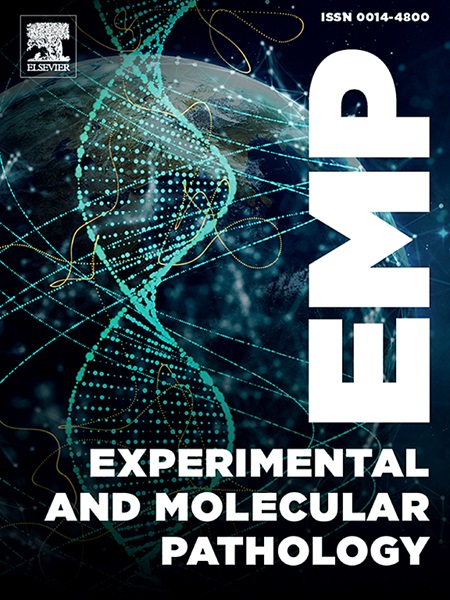重新审视TAM极化:超越M1和m2型TAM在巨噬细胞靶向治疗中的临床精确性
IF 3.7
4区 医学
Q2 PATHOLOGY
引用次数: 0
摘要
肿瘤相关巨噬细胞(tam)是肿瘤微环境(TME)的关键调节因子,显著影响癌症进展和治疗反应。tam分化为M1或M2表型,发挥不同的功能作用。m1型巨噬细胞促进炎症和肿瘤细胞破坏,而m2型巨噬细胞促进免疫抑制、血管生成和转移。然而,文献中关于TAM分类的不一致和错误描述导致了该领域的混乱,潜在地阻碍了有效的巨噬细胞靶向免疫疗法的发展。这篇评论强调了明确和标准化命名的必要性,阐明了M1型和M2型tam之间的功能区别,并探讨了驱动其极化的信号通路和环境因素。我们还讨论了新出现的TAM亚型和准确分类的治疗意义,包括巨噬细胞重编程策略。标准化术语和解决误解对于推进巨噬细胞免疫疗法和改善癌症治疗的临床结果至关重要。本文章由计算机程序翻译,如有差异,请以英文原文为准。

Revisiting TAM polarization: beyond M1- and M2-type TAM toward clinical precision in macrophage-targeted therapy
Tumor-associated macrophages (TAMs) are key regulators of the tumor microenvironment (TME), significantly influencing cancer progression and therapeutic responses. TAMs polarize into M1 or M2 phenotypes, exerting distinct functional roles. M1-type macrophages promote inflammation and tumor cell destruction, whereas M2-type macrophages facilitate immune suppression, angiogenesis, and metastasis. However, inconsistencies and mischaracterizations in the literature regarding TAM classification have led to confusion in the field, potentially impeding the development of effective macrophage-targeted immunotherapies. This commentary highlights the need for clear and standardized nomenclature, clarifies the functional distinctions between M1- and M2- type TAMs, and explores the signaling pathways and environmental factors driving their polarization. We also discuss emerging TAM subtypes and the therapeutic significance of accurate classification, including macrophage reprogramming strategies. Standardizing terminology and addressing misconceptions will be critical to advancing macrophage-based immunotherapies and improving clinical outcomes in cancer treatment.
求助全文
通过发布文献求助,成功后即可免费获取论文全文。
去求助
来源期刊
CiteScore
8.90
自引率
0.00%
发文量
78
审稿时长
11.5 weeks
期刊介绍:
Under new editorial leadership, Experimental and Molecular Pathology presents original articles on disease processes in relation to structural and biochemical alterations in mammalian tissues and fluids and on the application of newer techniques of molecular biology to problems of pathology in humans and other animals. The journal also publishes selected interpretive synthesis reviews by bench level investigators working at the "cutting edge" of contemporary research in pathology. In addition, special thematic issues present original research reports that unravel some of Nature''s most jealously guarded secrets on the pathologic basis of disease.
Research Areas include: Stem cells; Neoangiogenesis; Molecular diagnostics; Polymerase chain reaction; In situ hybridization; DNA sequencing; Cell receptors; Carcinogenesis; Pathobiology of neoplasia; Complex infectious diseases; Transplantation; Cytokines; Flow cytomeric analysis; Inflammation; Cellular injury; Immunology and hypersensitivity; Athersclerosis.

 求助内容:
求助内容: 应助结果提醒方式:
应助结果提醒方式:


